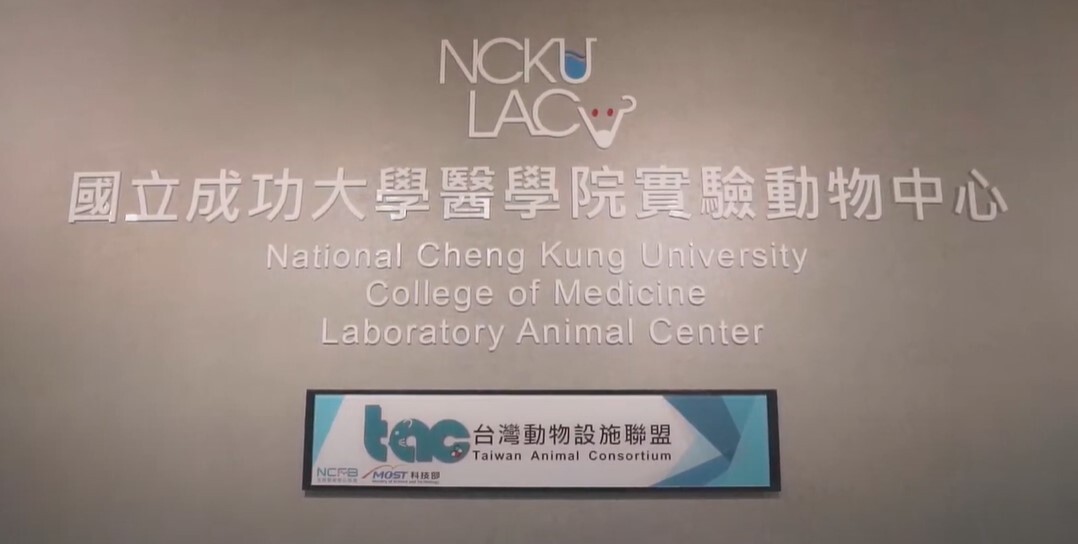Introduction

The NCKU Laboratory Animal Center (hereinafter to be referred as LAC) was established in 1987.
Locating on the 12th floor and B1 floor of the College of Medicine on the Cheng-Hsing Campus of NCKU, LAC covers an area of around 2530 square meters.
The species of animal housed in LAC include rodents, rabbits, swine, and zebrafish.
With the dedicated effort of 8 directors over the years, the B1 Holding Area, Imaging Core Facility, Transgenic Laboratory, In vitro fertilization and restoration services, Embryo Procedure Room and Zebrafish Core Facility have been established.
Its aim is to support animal housing, academic research, and medical education.
Our services mainly are culture, reproduction and contract breeding of laboratory animals. We provide animal residencies with multi-conditions and multi-functions for teachers and students of our school to fulfill their experiments and researches/studies. Our current facilities/equipments and status is as below:
- Facilities/Equipments:
- Independent Air Condition System — with High Efficiency Particulate Air Filter, HEPA filter, and full air exchange rate.
- Air barrier system of Reproduction Area—Reproduction of rats/mice in SPF.
- Infectious Animal Experiment Area—with negative pressure system that is compliance with the standards of level P2 as an laboratory for infectious elements. The possibility of pathology spread is diminished as minimum, and thus laboratory animals and staff are under protection.
- Surgical Animal Experiment Area—with facilities/equipments such as anesthesia machine, cardiograph, respirator, microscope exclusive for micro-surgeon and celioscope etc., we offer venues for courses and practices of animal experiments that are related to surgery, organ transplantation and laparoscopic surgery.
- Quarantine Area— with strict quarantine and monitoring/controlling for laboratory animals externally procured , particularly medium and large animals such as rabbits, dogs and pigs etc, and inoculation as prevention steps to isolate pathology from our Laboratory Animal Center.
- Contract Breeding Area—with standard procedures of breeding and environmental maintenance system for animals during experiments.
- Sterilization and Wash Area – with two high-pressure sterilization boilers as well as automatic tunnel washer(s) to offer clean items necessary for breeding and environmental maintenance.
- Current Status:
- Our center currently yields around 40,000 animals-in-SPF per year, including laboratory rats and mice, exclusively for teachers and students of our school.
- Reproduction of animals in disease model.
- Reproduction of laboratory rats in congenic inbred strain. We are the only source for such reproduction in Taiwan.
- Contract breeding area is fully under management of our Laboratory Animal Center. Currently, our contract breeding includes around 9,000 laboratory rats and mice, 180 animals in medium size and 20 animals in large size.
- Quality and Environmental Monitoring:
- We follow regular health monitoring for quality of laboratory animals every three months. The random inspection area includes reproduction area, sales area and contract breeding area, with tests including ectoparasite and endoparasite, serum antibody (MHV, PVM, SDAV, Sendai, LCM and Mycoplasma) , and isolation and identification for pathogen of trachea and cecum. Since such long term, the quality of animals under our reproduction has always been kept in high standard with the Barrier system.
- We also follow regular genetic monitoring every six months, with items as skin craft and electrophoresis analysis (including Carbonic Anhydrase-2 and Beta Chain Hemoglobin). Mixture and pollution has never occurs for such long time.As to our (monthly) environmental monitoring, microorganisms monitoring is carried out to monitor the clean degrees of each of animal rooms. We offer and assist in contract breeding of large animals that accepts organ transplantation from National Cheng Kung University Hospital, and in venues for practices.
- Prospects:
- Breeding with transgenic mice, knockout mice, and developing new transgenic techniques.
- Establishment of a NOD/SCID mouse in disease model for researcher to use.
- Expansion of our Laboratory Animal Center; and establishment of Interdisciplinary Biomedical and Preclinical Animal Testing Center(iBPAT Center).







